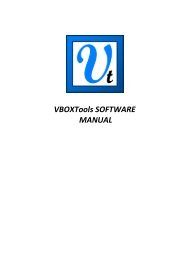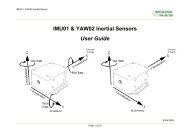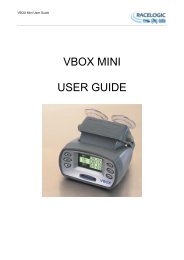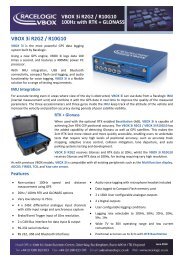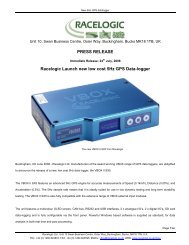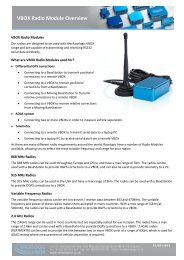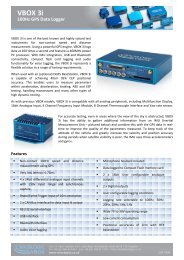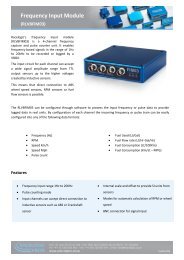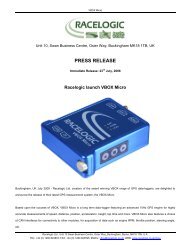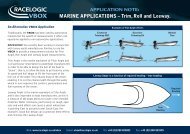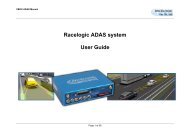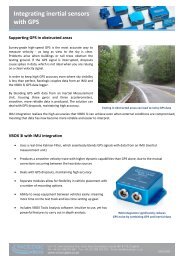Advanced Circuit Driving Techniques - Racelogic
Advanced Circuit Driving Techniques - Racelogic
Advanced Circuit Driving Techniques - Racelogic
Create successful ePaper yourself
Turn your PDF publications into a flip-book with our unique Google optimized e-Paper software.
<strong>Advanced</strong> <strong>Circuit</strong> <strong>Driving</strong> <strong>Techniques</strong><br />
Article 8: How to use predictive lap timing for real<br />
time improvements<br />
Learn how predictive lap-timing is used in racing<br />
for instant driver feedback, as used in VIDEO<br />
VBOX with the OLED predictive lap-timing display<br />
Real time feedback to the driver is becoming<br />
increasingly important in racing, to help evaluate<br />
driving lines and vehicle set-ups whilst out on the<br />
circuit and get the most out of valuable track time.<br />
As GPS technology becomes more and more reliable,<br />
predictive lap-timing becomes more accurate and<br />
useful.<br />
What are<br />
predictive-lap<br />
timers?<br />
Predictive lap<br />
timing is nothing<br />
new, and has been<br />
around for some<br />
time on many high<br />
end data-logging systems. The ability to see if your<br />
current lap is quicker or slower than your fastest, in<br />
real time, is invaluable for driver training.<br />
It enables amateurs to see where they’re losing time<br />
and try out different lines and braking points, whilst<br />
pros can verify that the lines they are using are indeed<br />
the fastest. Real time comparison also saves a lot of<br />
time and money in vehicle set up.<br />
However many existing systems are expensive.<br />
And because most use rolling distance around the<br />
lap (gathered from a wheel speed sensor) as a<br />
reference to compare two different laps, they’re not<br />
very accurate either. They rely on the line the driver<br />
takes around the lap being very similar; otherwise<br />
the alignment will get progressively worse as the lap<br />
unfolds. Sometimes this method works, but when a<br />
driver wants to try a different line, overtakes another<br />
car, or locks a wheel, it’s difficult to get a meaningful<br />
alignment. The longer the circuit, the more the margin<br />
of error increases.<br />
Predictive lap-timing using GPS<br />
A better solution is to use the GPS position from a<br />
fast updating data-logger to align the two laps. Whilst<br />
GPS position may only be accurate to a few metres,<br />
a typical average race speed would be well in excess<br />
of 30m/s, minimising any errors to around 1/10th of a<br />
second.<br />
www.VideoVBOX.co.uk<br />
How much more accurate is GPS?<br />
To see how this can help in the analysis software,<br />
we can take the two best laps during a race from a<br />
professional driver around the 1.6 mile Silverstone<br />
National <strong>Circuit</strong> in the UK.<br />
The rolling distance variation was 11.6m even though<br />
the lap-time difference was only 0.06s. This equates to<br />
an analysis alignment error of 0.3s, and this is around<br />
a very short track, with a very good driver. On a longer<br />
track with a less consistent driver, this error can easily<br />
grow to over 1s!<br />
However, by using GPS position, the timing error<br />
between these laps is virtually eliminated. GPS means<br />
that the time can be kept accurate to within 1/10th of<br />
a second.<br />
53



